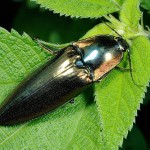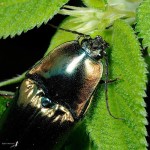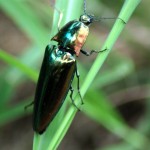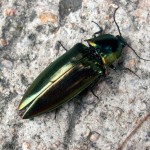Species: Campsosternus auratus
English Name: Jewel Click Beetle, Large Green Click Beetle
Chinese Name: 松麗叩甲, 大青叩頭蟲
Family: Elateridae
Description:
The Green Click Beetle has around 4,5 cm in length and, like all the species in this family, has a slender body. The upperside is metallic green in color and have a narrow joint which allows the beetle to make a clicking. The larvae are called wireworms and live in the soil feeding on the roots of trees and plants.




Photos used under a Creative Commons license
References:
– Easton, E. R. (1993). The insects of Macau. Macau: University of Macau Publications Centre.

